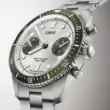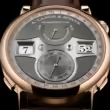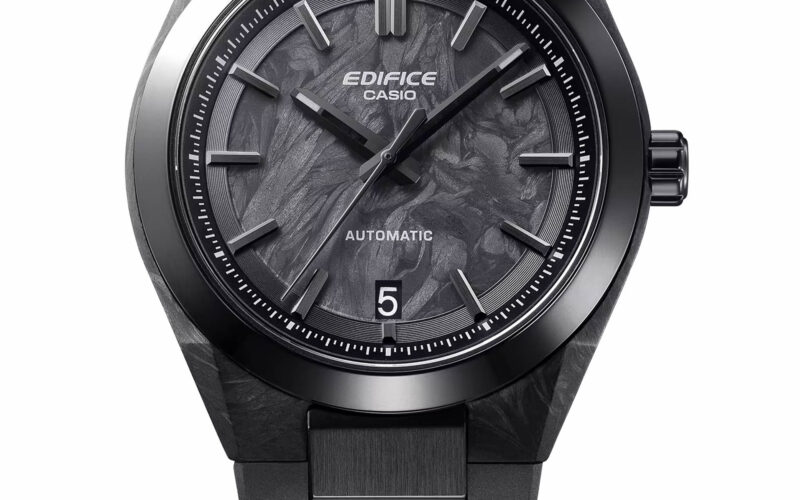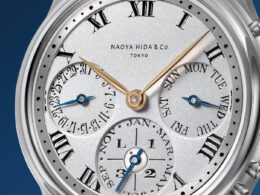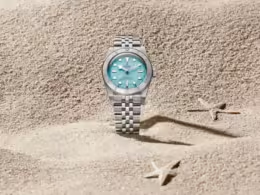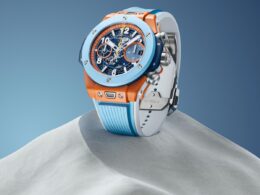After decades of dominating the affordable watch market with quartz precision, Casio has finally entered mechanical territory with the Edifice EFK-100 collection. This represents a seismic shift for a brand synonymous with digital displays, solar power, and atomic timekeeping.
Yet the watch enthusiast community finds itself grappling with conflicting emotions: excitement over this historic milestone versus disappointment that Casio’s mechanical debut feels more like a routine line extension than the groundbreaking moment it should be.
Tick Tock Revolution
The Edifice EFK-100 arrives in five variants, ranging from ¥49,500 to ¥74,800 ($340-$515 USD), positioning itself firmly in affordable mechanical territory. This pricing strategy aligns perfectly with Casio’s DNA – the brand that gave us the iconic G-Shock, F-91W, and countless other accessible timepieces that became cultural phenomena through value rather than exclusivity.
However, the movement choice has sparked considerable debate. Rather than developing a proprietary caliber or partnering with a prestigious manufacturer, Casio opted for the ubiquitous Seiko NH35 – possibly modified, though the brand remains conspicuously silent about any enhancements. This decision feels both pragmatic and disappointing, reflecting Casio’s practical approach while potentially underwhelming enthusiasts who expected something more revolutionary from this historic launch.
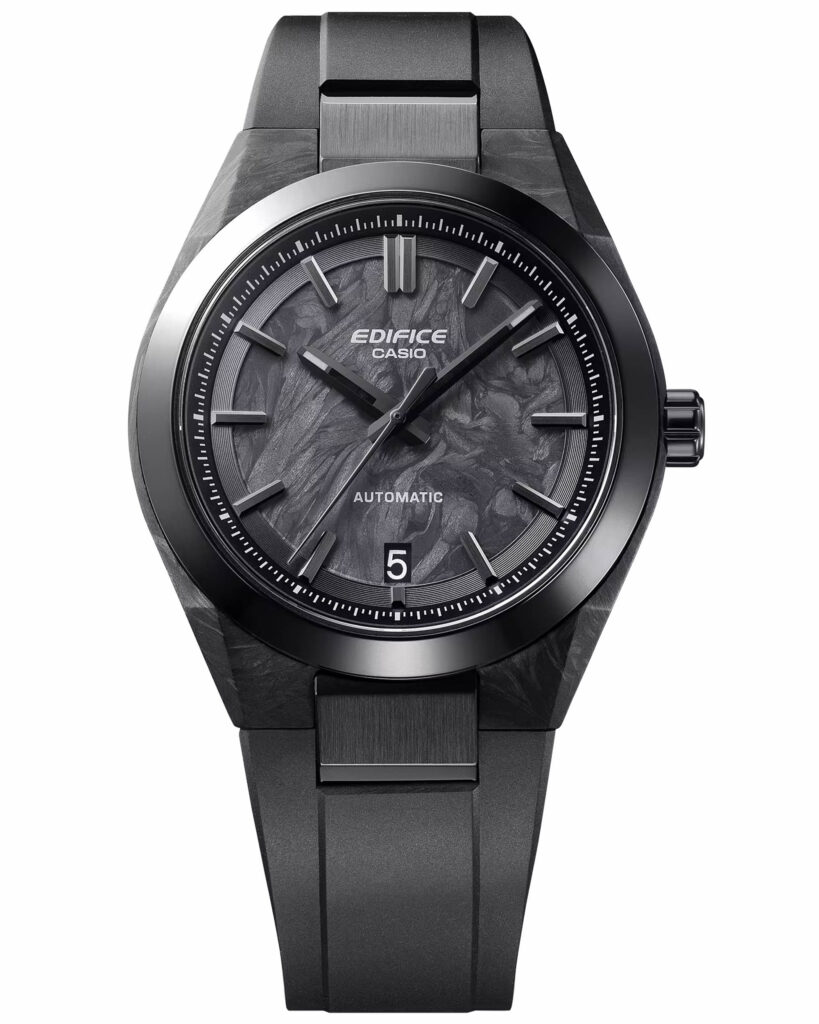
The NH35 delivers standard specifications: 40-hour power reserve, 3Hz frequency, hacking seconds, date display, and 24 jewels. More concerning is Casio’s stated accuracy tolerance of -35 to +45 seconds daily – a specification that feels antiquated in 2025’s mechanical landscape, where even entry-level Swiss movements typically achieve better regulation.
Design Excellence Meets Mechanical Mediocrity
Where the EFK-100 truly shines is in its execution and materials. The steel variants measure 39mm wide by 43.5mm lug-to-lug and 12.5mm thick, offering 100-meter water resistance and magnetic protection (JIS Class 1). The standout model, the EFK-100XPB-1AJF, features a carbon fiber reinforced plastic (CFRP) and steel case measuring 45x40x12.5mm, weighing just 87 grams compared to the steel models’ 148 grams.
Dial options showcase Casio’s attention to detail: the EFK-100CD-1AJF features genuine forged carbon, while blue, green, and white variants use electroforming to recreate carbon’s appearance. Applied indices and complex hands demonstrate quality exceeding the price point, while the polished and brushed case surfaces integrate beautifully with the slim metal bracelet’s alternating finishes.
The sapphire crystal with anti-reflective coating represents another value-added feature, though the transparent caseback reveals the industrial-looking NH35 in all its unadorned glory. This visual honesty feels appropriately Casio – no decorative flourishes or fake Geneva stripes, just functional machinery doing its job.
The carbon fiber model at ¥74,800 ($515) offers the most compelling proposition, combining lightweight construction with genuine exotic materials. The steel variants at ¥49,500 ($340) represent exceptional value in the mechanical market, potentially appealing to Casio fans seeking their first automatic watch.
Currently limited to the Japanese market with July/August 2025 availability, the EFK-100 collection embodies Casio’s pragmatic philosophy: affordable, well-executed, and designed for daily wear. Whether this approach satisfies collectors expecting a more revolutionary debut remains to be seen.
The first mechanical Casio is undeniably historic, yet it feels surprisingly ordinary – perhaps the most Casio thing about it. While some may lament the missed opportunity for genuine innovation, others will appreciate that Casio has remained true to its core values: accessibility, reliability, and honest value proposition. The EFK-100 succeeds as a line extension but falls short as a horological milestone, leaving enthusiasts to decide whether that’s disappointment or authenticity.
